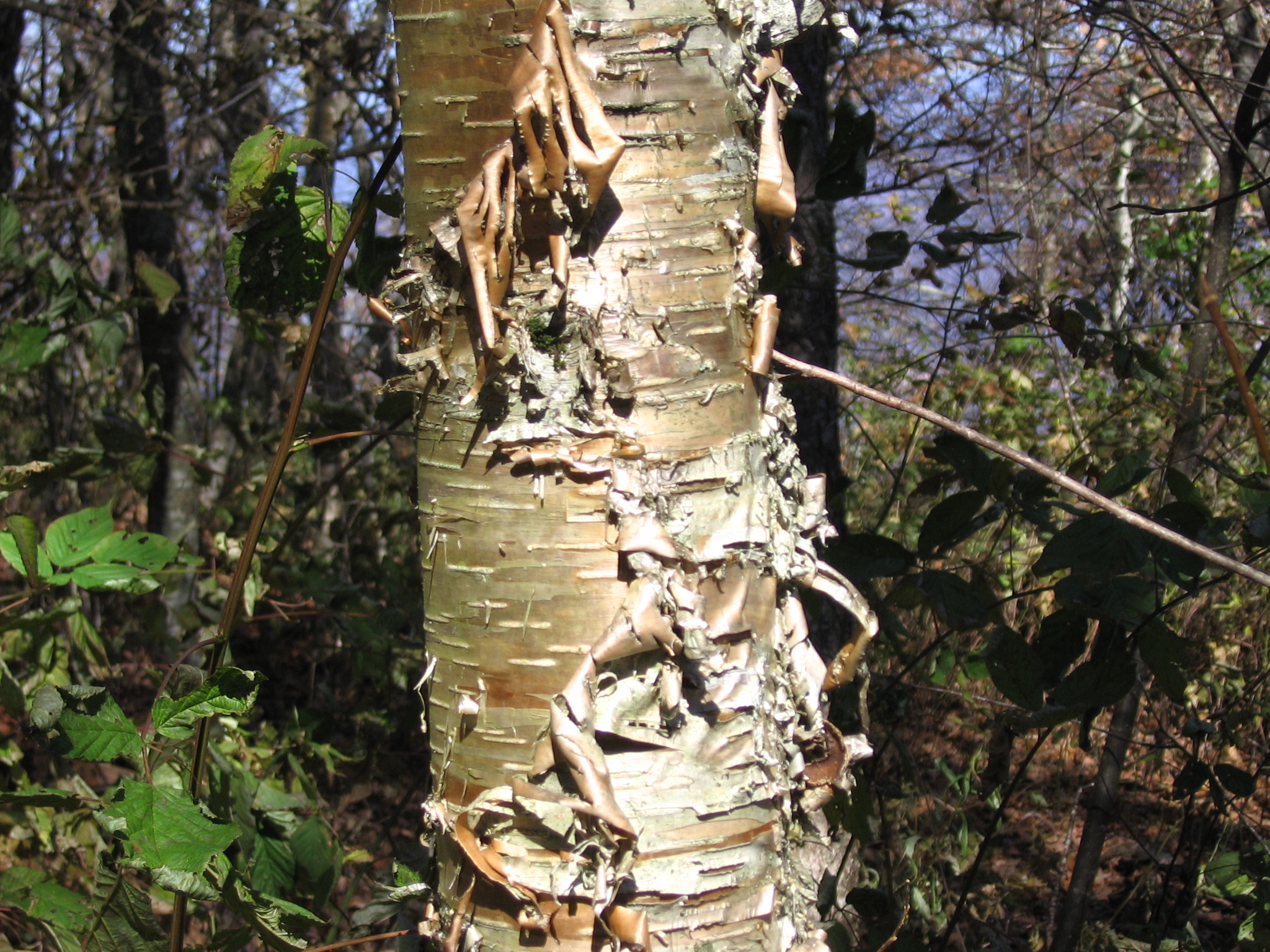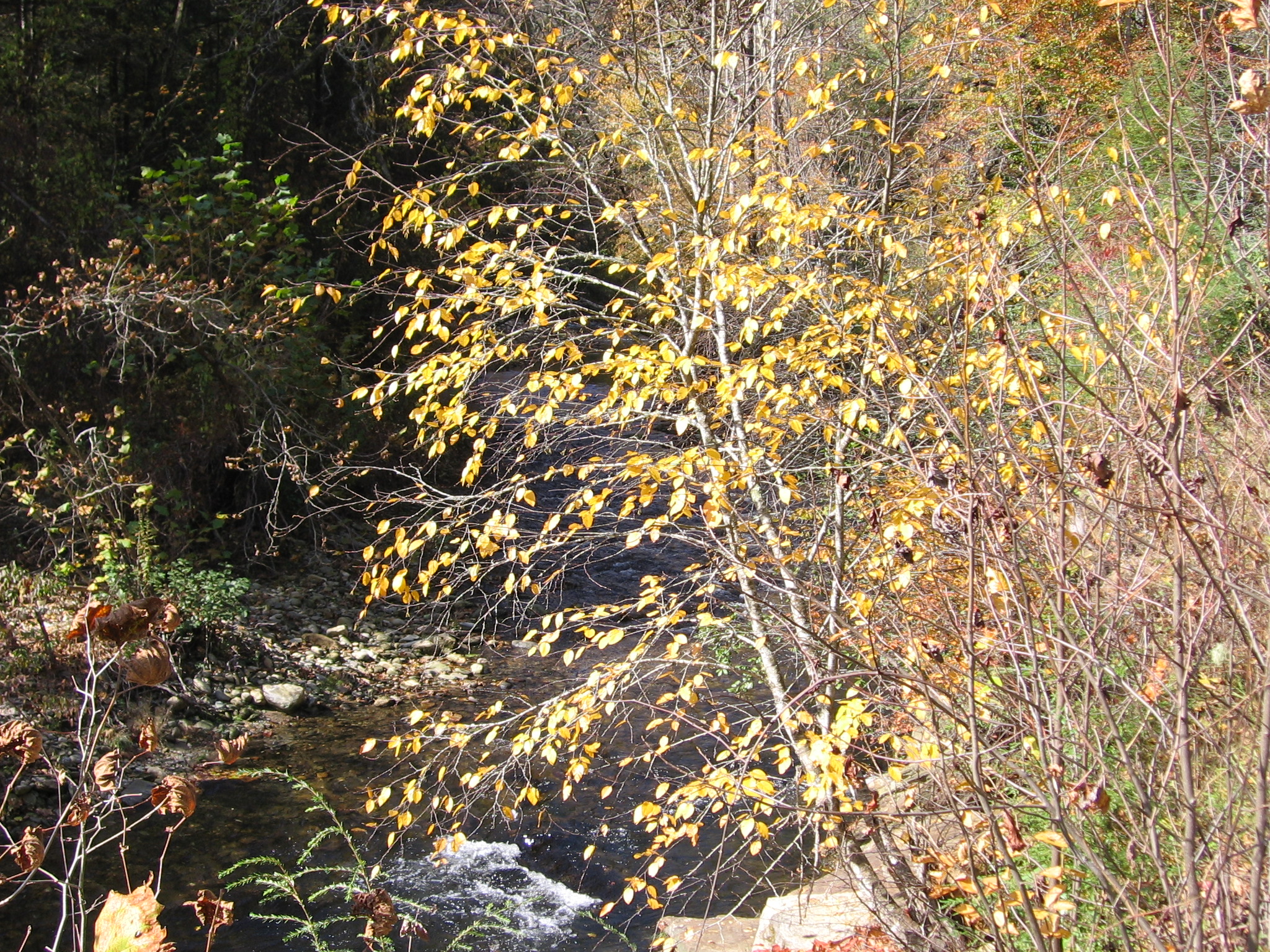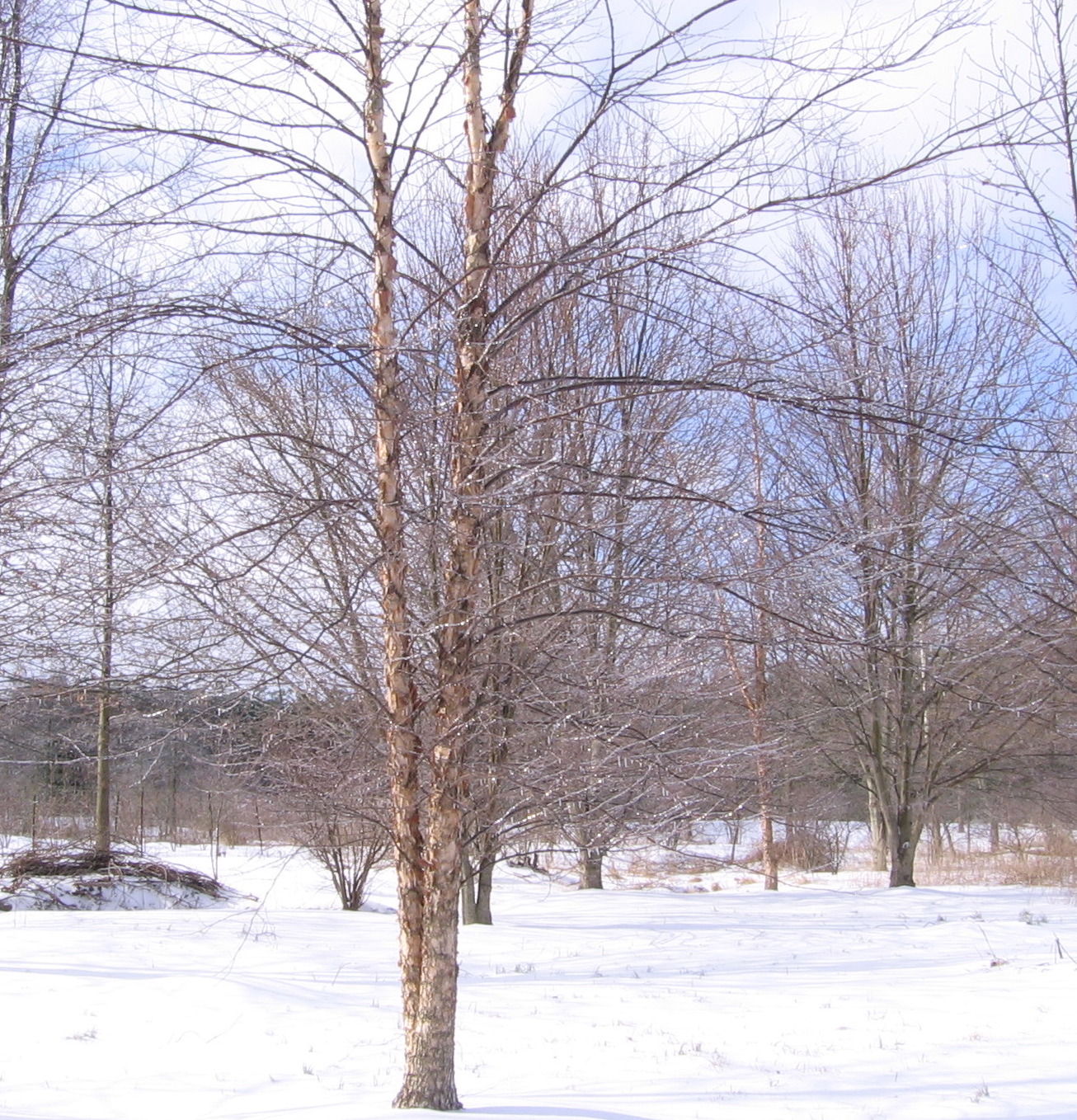Native Birches
The birches are a largely northern genus, tending to be opportunistic colonizers of disturbed sites. Their flowers are wind-pollinated, and their seeds are wind-dispersed. Male flowers are in pendant catkins, which can be lovely in the right light. Birches are well-loved for their showy barks, but many are not well-suited to the rigors of hot, dry, modern landscapes. Most prefer cool, moist but well-drained, somewhat acidic soils. Fall colors tend to be yellow to golden.
The birches support over 400 species of moths and butterflies, ranking behind only the oaks, the willows, and the cherries and plums as a larval food source. Flower buds and seeds provide food for songbirds, small mammals, grouse, and turkeys (Tallamy 2007).
Yellow Birch, Betula alleghaniensis
Nothing matches the rich glow of the delicately peeling bark of a good yellow birch. This denizen of rich woods and north-facing slopes prefers cooler temperatures and moist soils. It tolerates shade well and makes a good understory tree, although it will grow to large timber size if given the chance. Scrape the bark of twigs to enjoy the wintergreen scent. Ht. 60-70 ft.+ Zone 3-7.

Back to top
Black, Sweet or Cherry Birch, Betula lenta
Common names can say a lot - this birch has smooth, dark bark with wide lenticels reminiscent of the bark of cherry trees. The bark tends to stay smooth, with some vertical splits but no peeling. The 'sweet' refers to the strong, sweet wintergreen flavor of the sap and inner bark, used to flavor birch beer. Tolerates warmer and drier sites than paper and yellow birch, and glows with the best clear yellow-gold fall color of the birches. Ht. 40-60 ft. Zone 4-7.

Back to top
River Birch or Red Birch, Betula nigra
Beautiful exfoliating bark makes this fast-growing tree a favorite specimen. Ranging southward to Florida, it is the most popular birch in the nursery trade because it tolerates heat well and is very resistant to borers. Best in somewhat acidic, moist to average soils. Ht. 40-70 ft. (Sun to Partial shade)
Back to top
River Birch 'Fox Valley', Betula nigra
'Heritage' River Birch, Betula nigra 'Heritage'
This popular selection has particularly light, creamy-white bark that exfoliates into large peels showing its coppery-salmon inner layer. Foliage creates a pleasant light shade. Tolerates heat well, grows vigorously, and is resistant to borers. Best in somewhat acidic, moist to average soils. Ht. 40-70 ft.+ (Sun to Partial shade)

Back to top
Paper Birch, Betula papyrifera
The classic white or canoe birch, with striking white stems. It is a denizen of colder climes, although it does range south to PA and NJ. Best in cool, moist but well-drained soil. Ht. 50-70 ft.+ Zone 2-6.
Back to top

